11.1 overview and kidney structure
1/39
There's no tags or description
Looks like no tags are added yet.
Name | Mastery | Learn | Test | Matching | Spaced |
|---|
No study sessions yet.
40 Terms
osmosis
passive transport of water across a selectively permeable membrane in response to solute concentration gradients, pressure gradients, or both
solute concentration is measured as __ in
osmolarity, milliosmoles per liter of solution (mOsm/L)
water moves osmotically from a solution of __ osmolarity to one of __ osmolarity aka from where there is __ “free'“ water to where there is __
lower, higher, more, less
osmoregulation
maintaining osmolarity of body fluids
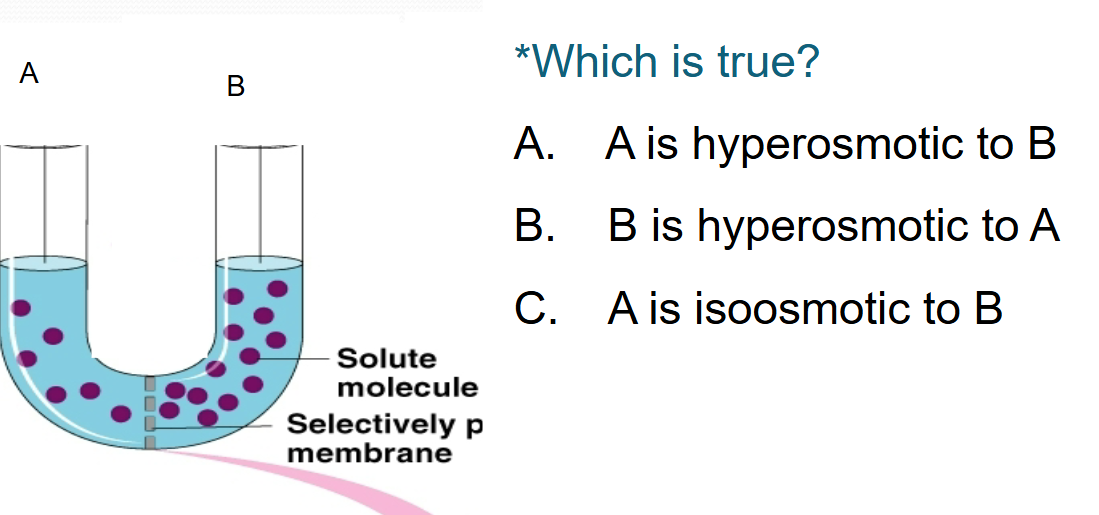
+which way will water go?
B, to the right
osmotic pressure
the minimum pressure which needs to be applied to a solution to prevent the inward flow of water across a semipermeable membrane
purpose of osmoregulation in animals
to keep osmosis from shrinking or swelling their cells — want to keep cellular and extracellular fluids isoosmotic
osmoregulators
keep the osmolarity of body fluids different from that of the env
osmoconformers
allow the osmolarity of their body fluids to match that of the env
excretion is coupled with osmoregulation how?
molecules and ions are removed from the body to keep cellular and extracellular fluids isoosmotic
in most animals, extracellular fluids are filtered through tubules formed from transport epithelium (layer of cells w transport proteins in their membrane) and released to the exterior of the animal as urine
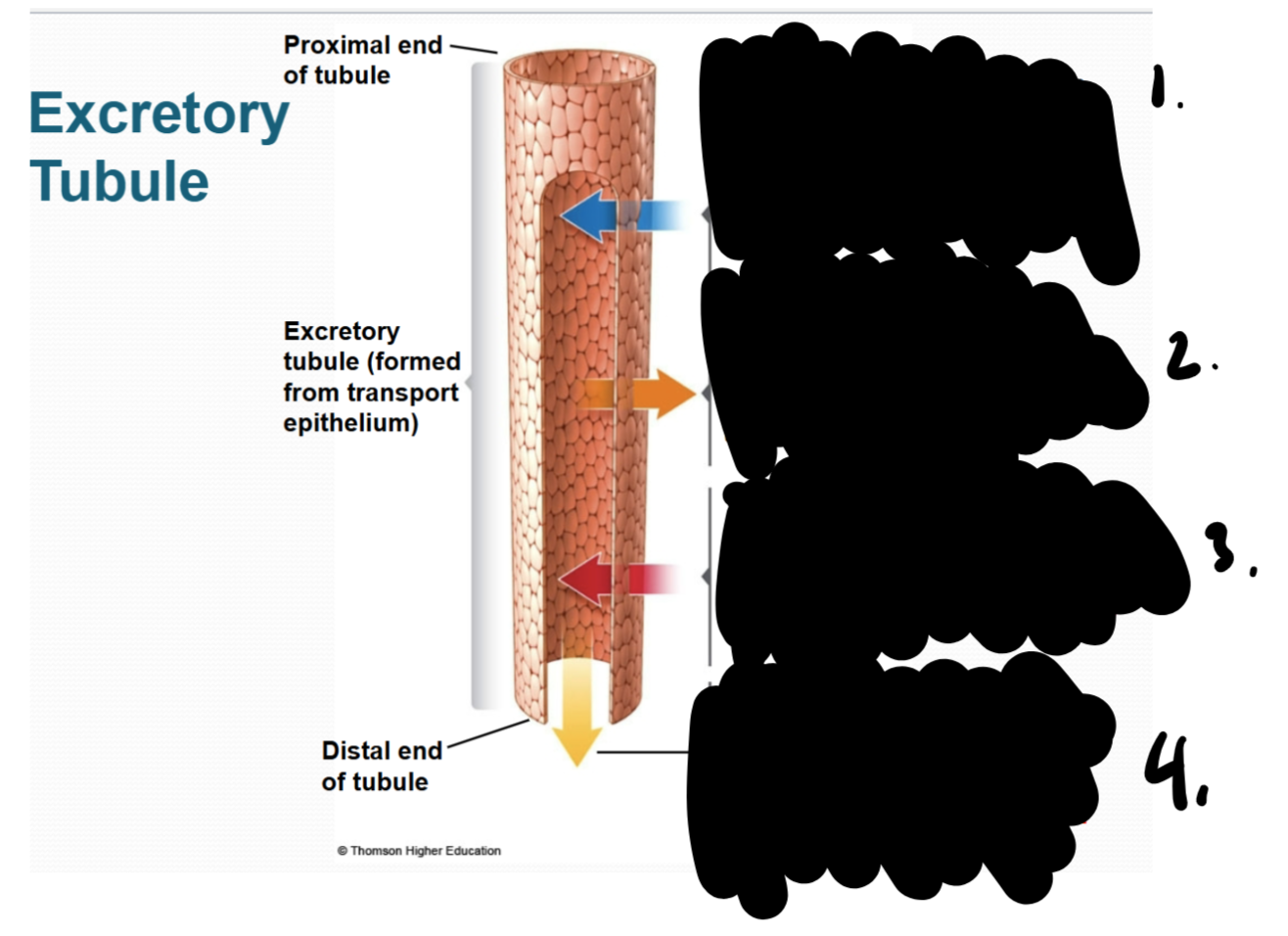
1.
filtration: small molecules and ions from body fluids or blood NONSELECTIVELY pass through narrow spaces between cells into the tubule
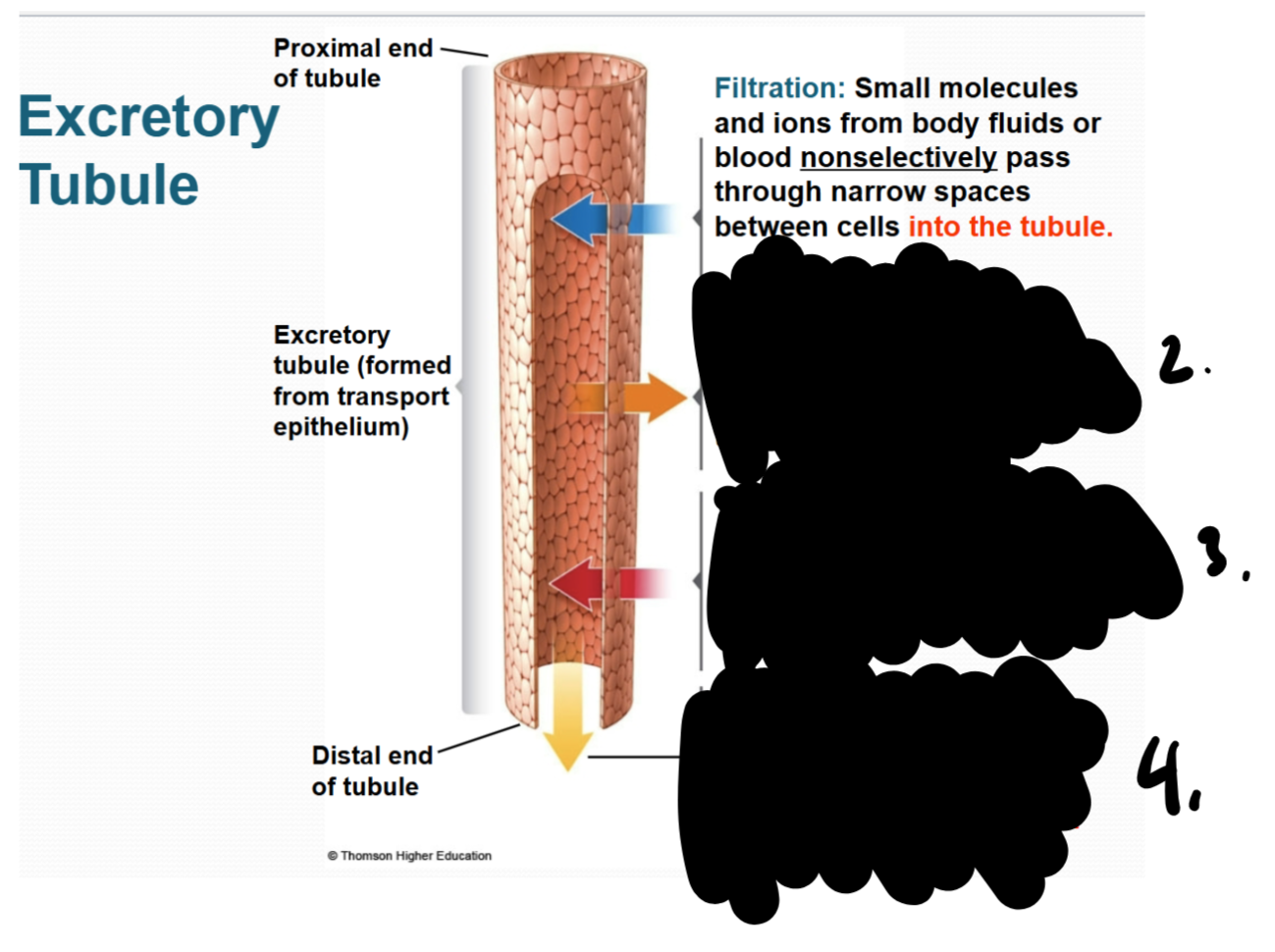
2.
reabsorption: nutrient molecules, some ions, and conserved water are returned to the body fluids or blood by transport epithelium
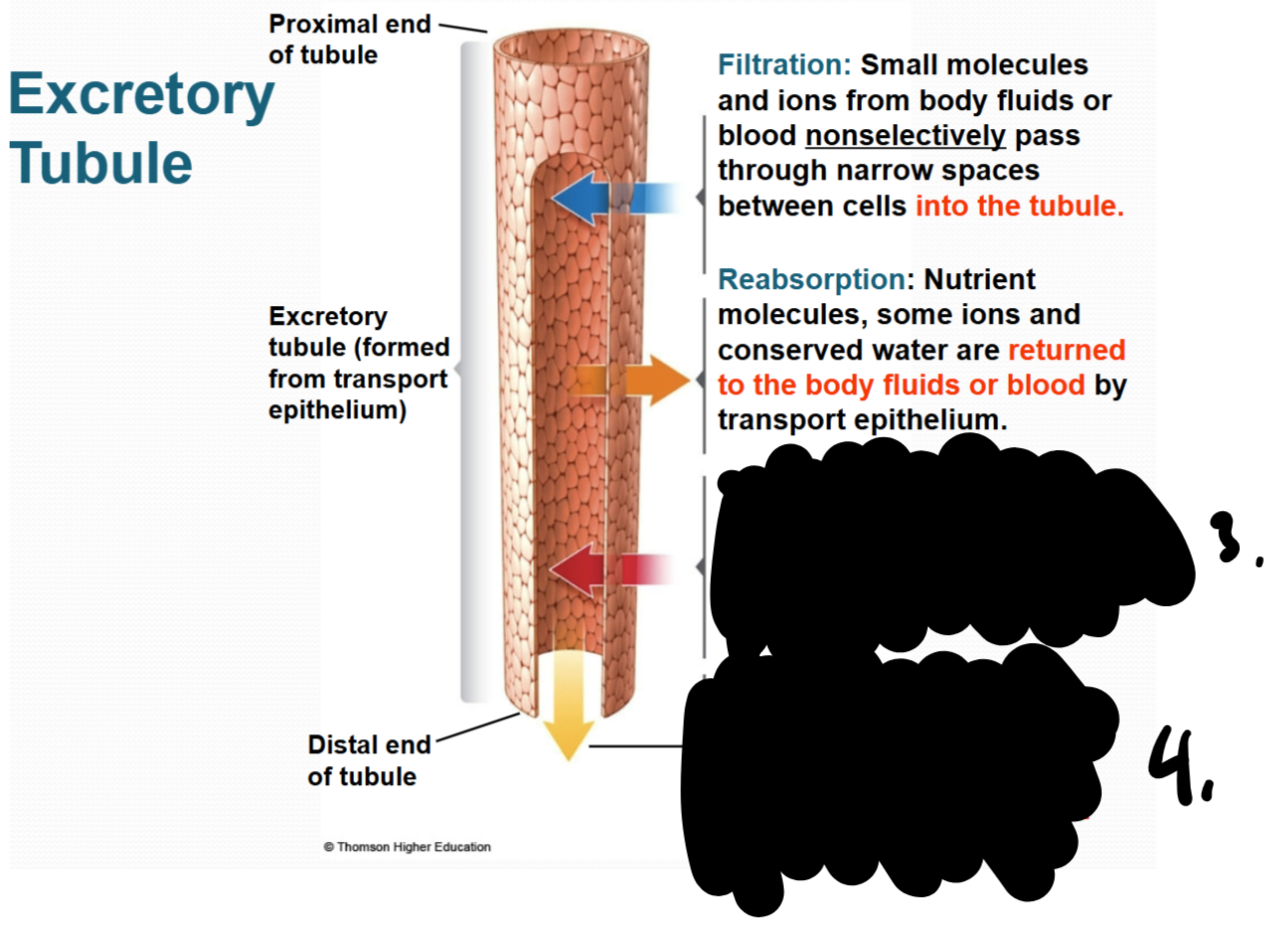
3.
secretion: excess ions and toxic breakdown products are transported SELECTIVELY from the body fluids or blood into the tubule
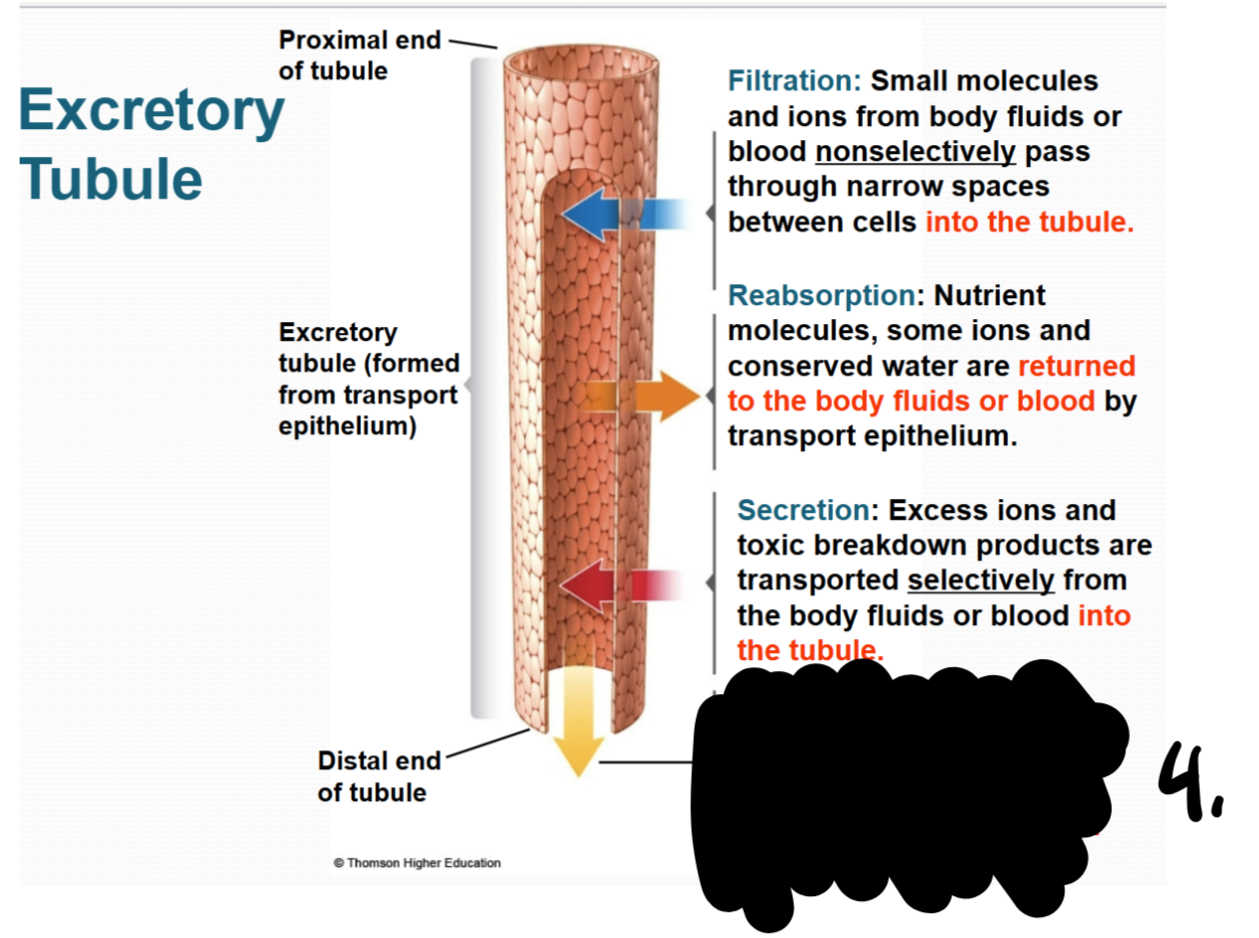
4.
release: urine (nitrogenous wastes, some ions, toxic breakdown products, excreted water) is released into the environment
what gets reabsorbed generally? where does this occur mostly in the kidney?
glucose, amino acids, ions: Na+, K+, Cl-, water, HCO3-
in kidney, this occurs mostly in the proximal convoluted tubule
what gets secreted, why, and where?
H+, K+
important for maintaining ion and pH balance
in the kidney, occurs mostly in the distal convoluted tubule
what gets excreted?
substances that are unneeded or are in excess: wastes such as nitrogen compounds, NH3 (ammonia)
secretion
the discharge of wastes from the body fluid into the filtrate
selective process in which specific small molecs and ions are transported from the blood into the excretory tubules
excretion
elimination of substances from the body
disposal of nitrogen containing waste products of metabolism
ammonia + who excretes
toxic, must be diluted to be excreted, usually aquatic animals excrete this
urea + who excretes
made from combining ammonia w HCO3-, requires less water than ammonia, mammals, most amphibians, sharks, some bony fishes
uric acid + who excretes this
conserves even more water, birds, insects, many reptiles, land snails
renal artery
from the abdominal aorta, supplies kidney w blood
renal vein
goes to the inferior vena cava
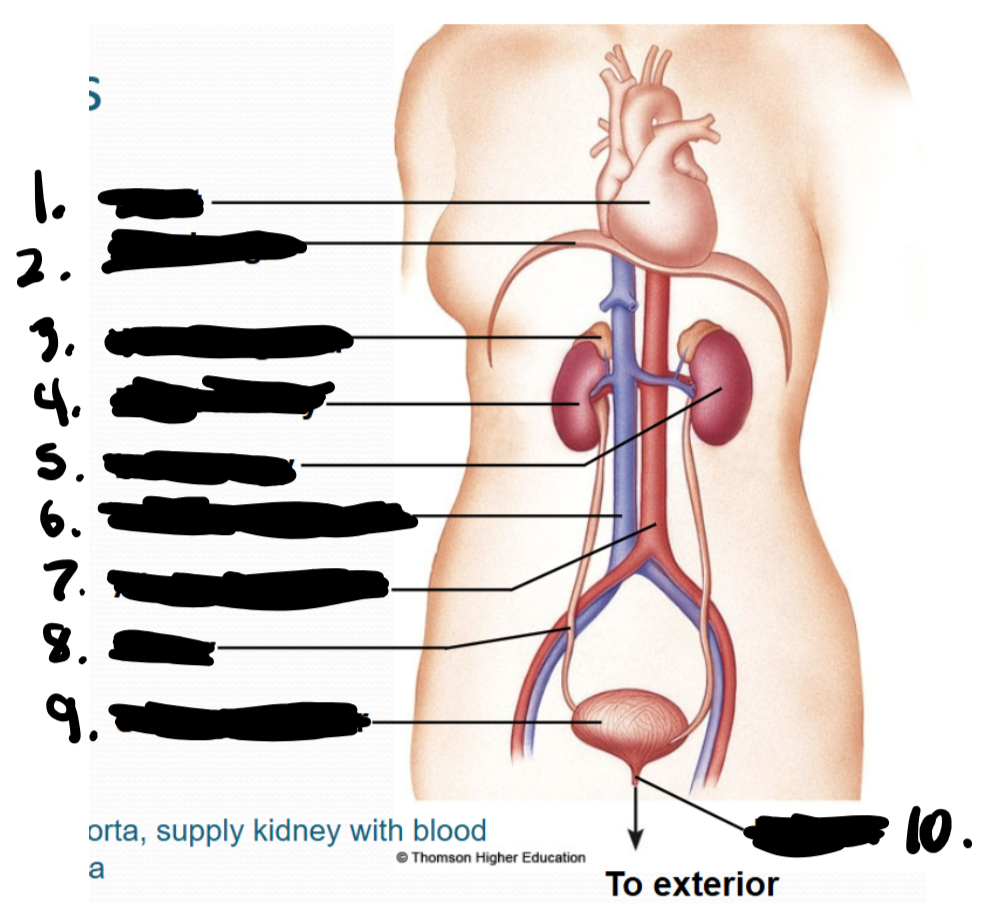
heart, diaphragm, adrenal gland, right kidney, left kidney, inferior vena cava, abdominal aorta, ureter, urinary bladder, urethra
in mammals, urine is __ to body fluids bc it conserves __. almost all other vertebrates produce urine that is __ to body fluids
hyperosmotic, water, hypoosmotic
production of hyperosmotic urine (more concentrated) is accomplished by specialized structures in the
kidney
kidney structures (__) have __ (established by specific __ in specific regions)
nephrons, permeability differences, transport proteins
different __ of molecules and ions in the __ in the __
concentration gradients, interstitial fluid, kidney
__ surrounding the nephron reabsorb ions, water, and other molecules that have been secreted into the nephron
network of capillaries
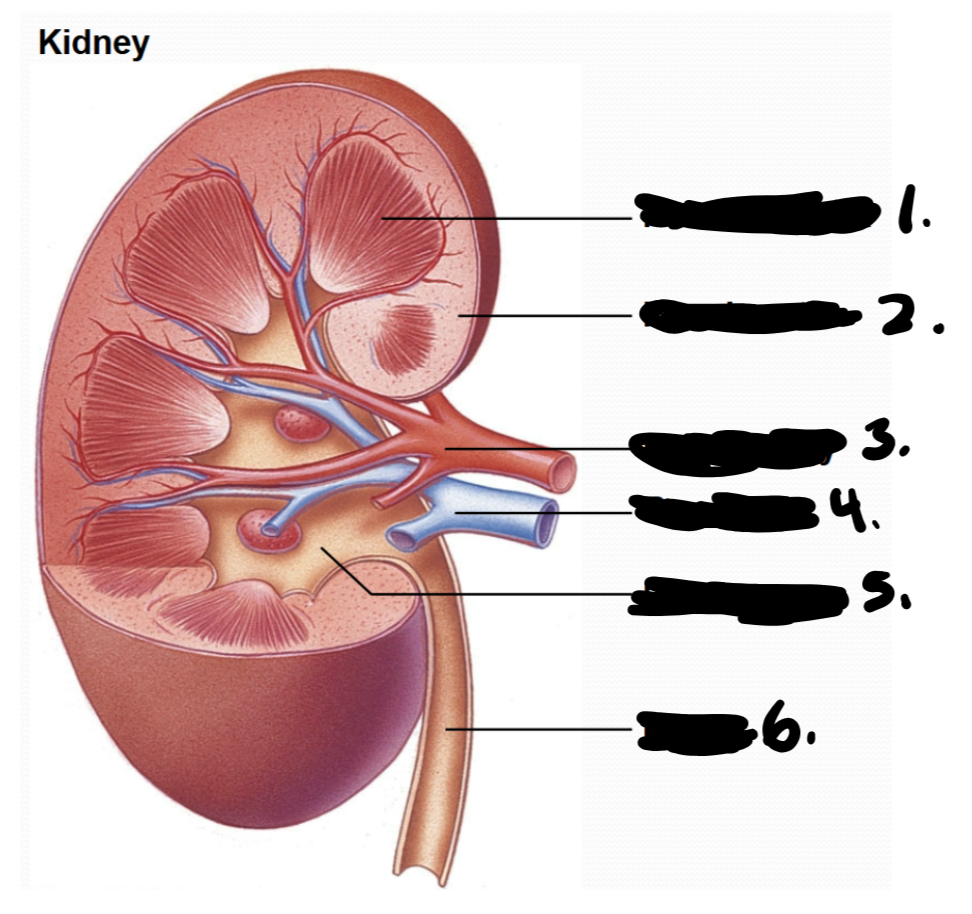
renal medulla, renal cortex, renal artery, renal vein, renal pelvis, ureter
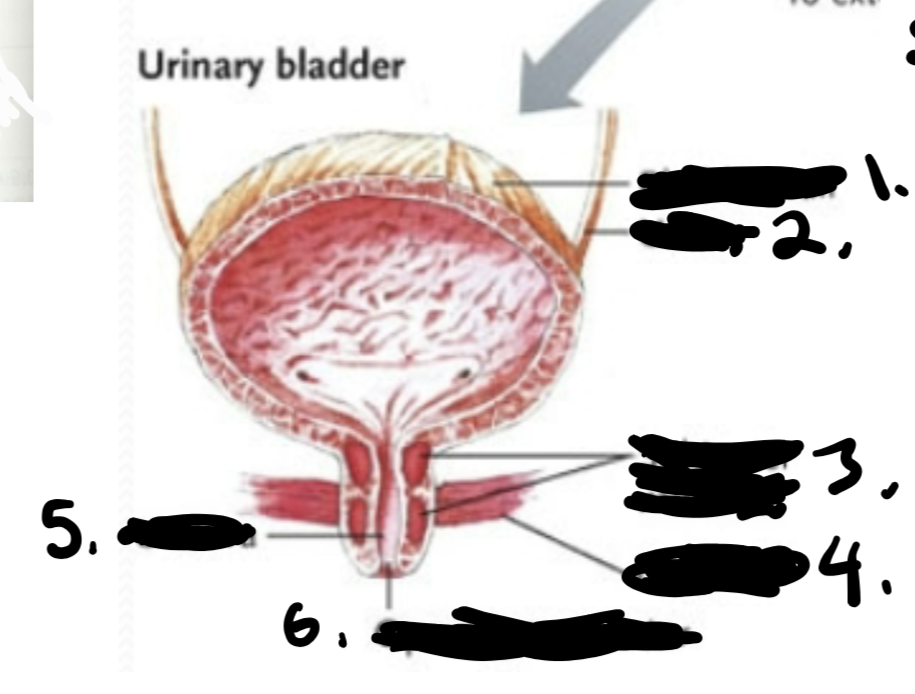
bladder wall, ureter, sphincter muscles, body wall, urethra, opening to exterior
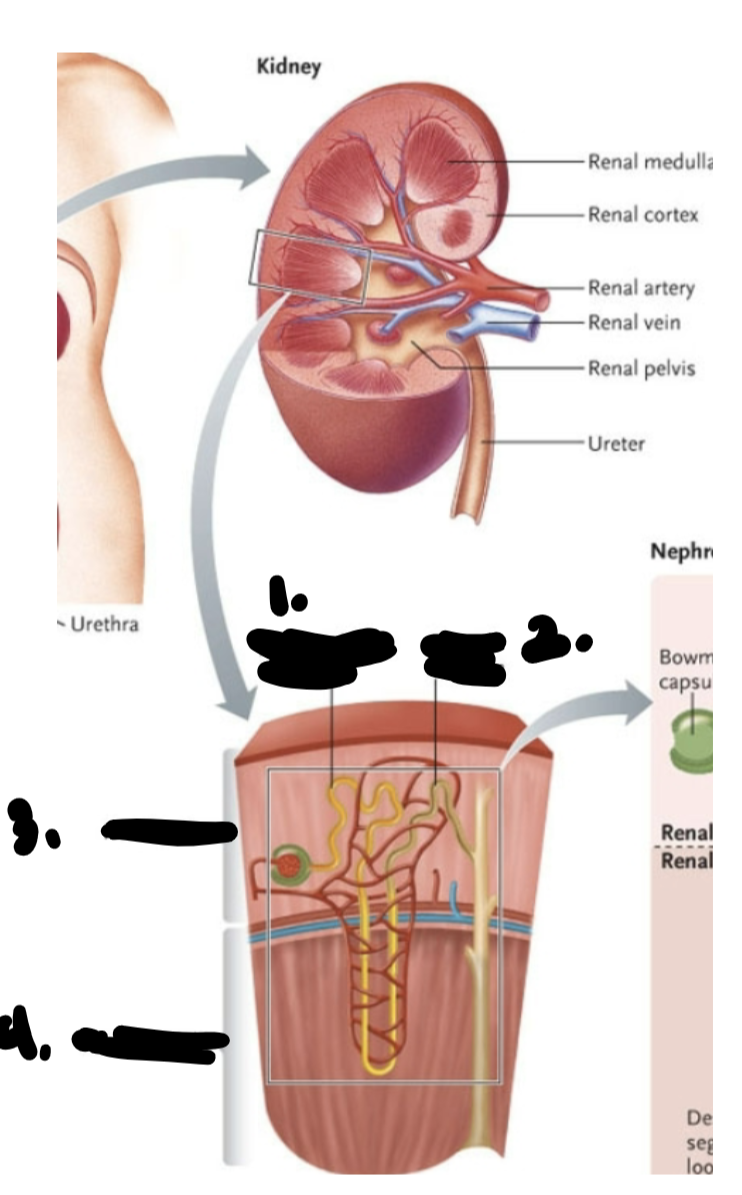
juxtamedullary neuron, cortical nephron, renal cortex, renal medulla
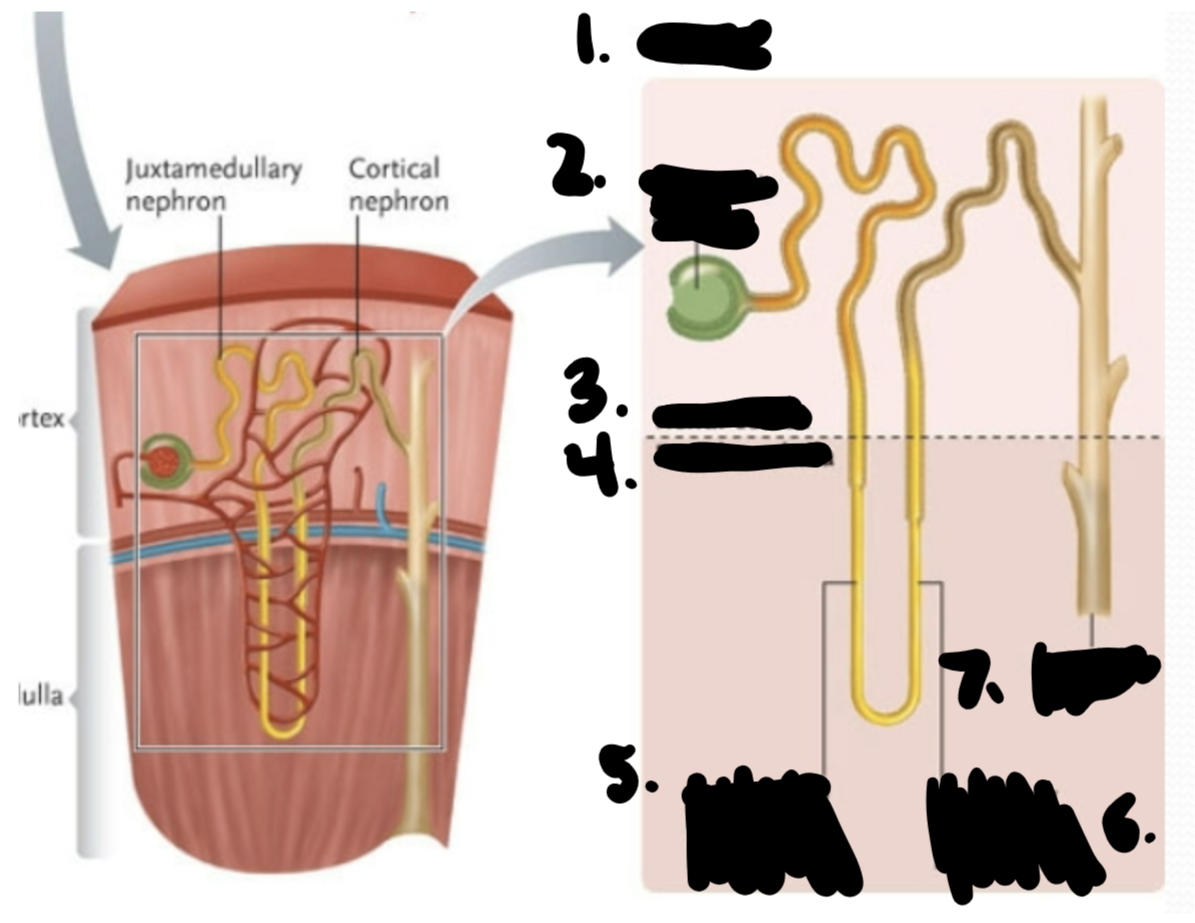
nephron, bowman’s capsule, renal cortex, renal medulla, descending segment of loop of Henle, ascending segment of loop of Henle, collecting duct
urine production - overview
leaves individual nephrons
is processed further in collecting ducts
pools in the renal pelvis
flows through the ureter to the urinary bladder
flows through the urethra to the exterior of the animal
blood flow in the kidney - overview
blood flows into the kidneys through the renal artery, to interlobular artery, to afferent arteriole, and enters the glomerulus (cluster of blood vessels) in Bowman’s capsule (cup-like part of the nephron that is around the glomerulus)
in the glomerulus, the blood flow is split into 50 capillaries that have very thin walls
the solutes in the blood are easily filtered thru spaces in these walls due to the pressure gradient that exists btwn the blood in the capillaries and the fluid in the Bowman’s capsule
the pressure gradient is controlled by the contraction or dilation of the arterioles
after passing through the efferent arteriole, the filtered blood enters the vasa recta blood vessels near the Loop of Henle
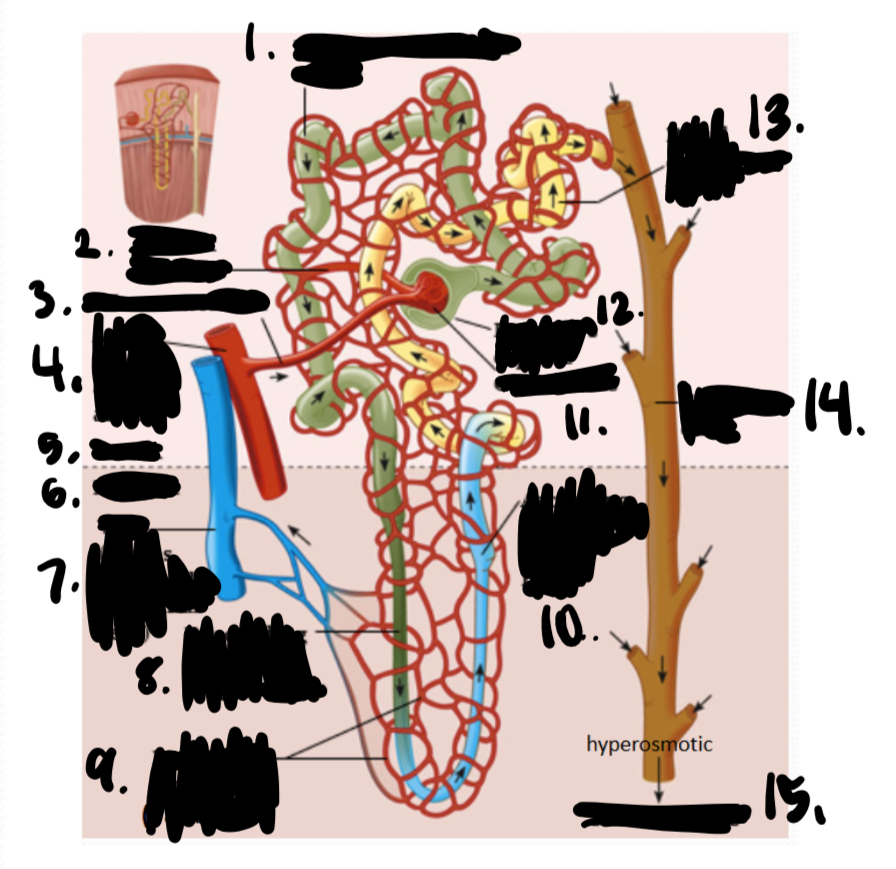
proximal convoluted tubule, efferent arteriole, afferent arteriole, artery (branch of renal artery), cortex, medulla, vein (drains ultimately into renal vein), descending segment of loop of Henle, peritubular capillaries (vasa recta), ascending segment of loop of Henle, glomerulus, Bowman’s capsule, distal convoluted tubule, collecting duct, to renal pelvis
nephron
a structure in the kidney; specialized tubule involved in osmoregulation/excretion
each human kidney has > 1 million nephrons
juxtamedullary nephrons: 20%, long loops that extend into the medulla
cortical nephrons: 80%, short loops mostly located in the cortex
vasa recta
blood vessels around the loop of Henle in medulla region (note: peritubular capillaries are located more cortically)
are important in maintaining the ion gradient of the medulla to facilitate osmosis with the loop of Henle